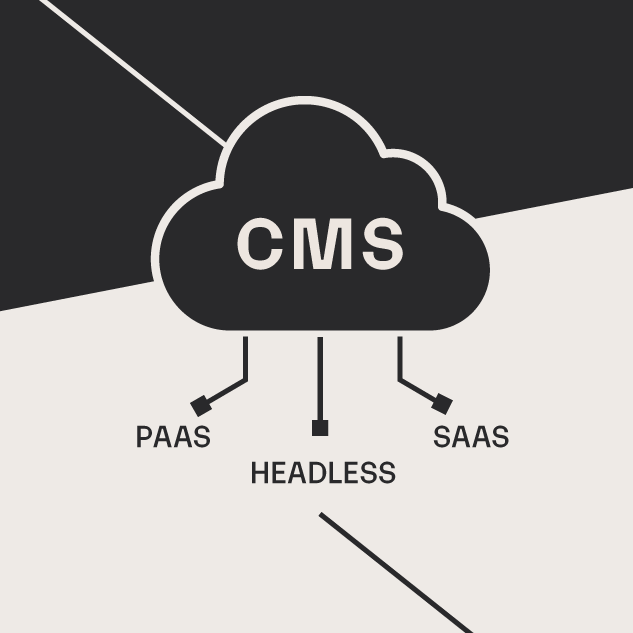Blurring the Lines Between CRM and MAP
Chris Osterhout SVP of Strategy#Digital Marketing, #Inbound Marketing

Learn how combining CRM and MAP systems into a single platform is the best way to eliminate gaps in your online strategy.
Historically, sales and marketing have worked independently, with the two departments using different software platforms and maintaining different sets of data. A Sales team uses a Customer Relationship Management (CRM) platform like Salesforce to track contact information and sales opportunities, while Marketing uses a Marketing Automation Platform (MAP) like HubSpot and/or an email marketing platform like ConstantContact to manage lead information and email campaigns. While it is possible to eliminate the gaps between these systems, maintaining multiple sets of data is not an ideal solution.
Separate Systems = Confusion
Since Sales and Marketing often work separately, determining how lead and contact information is handled can cause confusion. For instance, if a potential customer fills out a web-to-lead form on your website, where does that information go? Is the information sent to an email address and manually added to a contact database in either the MAP or CRM? Is it sent directly to the CRM for a member of the Sales team to immediately take action?
With only a minimal amount of contact information, the Sales team doesn’t know enough about them to determine how best to help them. Are they a new prospect, someone who has previously contacted you, or an existing customer? Have they visited your website? Has the Marketing team already been in contact with them via email or social media? Confusion about where the data resides prevents the Sales team from getting the just-in-time information they need to help customers understand how your services can meet their needs.
Marketing Automation Provides a Better Way
As Marketing Automation software like HubSpot has evolved, it has helped people to resolve these issues with separate systems and implement a true Inbound Marketing strategy. By providing tools to create automated landing pages, MAPs capture lead information and place it in a marketing database, allowing the Marketing team to go through a series of qualifying steps before referring the leads to the Sales team.
In addition, automated processes can connect the MAP to the CRM that the Sales team uses, sending information to the Sales team in real time. This includes not just basic lead information, but qualitative and quantitative information that provides a great deal of value for understanding how to meet customers' needs. With the information that the MAP captures, the Sales team can know what pages on your website a contact has visited, what offers they have downloaded, whether they have positively responded to any email campaigns, whether anyone else in the company has visited the website, and all manner of other data that will help you understand what problems they are looking to solve. This integrated data gives the Sales team invaluable insight into their communications with the leads by helping them understand the digital conversation that they have already been having with your company.
The Next Step: A Single System
While the integration between your CRM and MAP can do a good job of sharing information between the two systems, it still requires you to maintain two separate sets of data. In order to make this integration even more seamless, a new trend is starting to emerge in which the lines between these systems is blurred even further. The best example of this is HubSpot’s new Sales Platform, which shares CRM and MAP data in a single platform.
This level of consolidation offers an even more granular level of intelligent data analysis, allowing both Marketing and Sales teams to react more quickly and close sales even faster. Information can now be shared in both directions, with the Marketing team providing information to Sales as mentioned above, but also being able to understand what is happening with sales opportunities “on the ground” and adjust communications with customers accordingly.
For an example on how this fully integrated system can benefit both Sales and Marketing, consider a case in which a member of your Sales team is speaking with a potential customer about one of your company’s service offerings. They can look at the marketing data for that contact and see what pages of the website the contact has been visiting, which will help them understand more about what problems the contact is looking to solve and exactly which of your services can do so. But at the same time, when Sales is speaking to the contact about certain services, the Marketing team can see what information the contact might be interested in learning more about and subscribe them to email campaigns related to that area.
This is just one example of how this two-way sharing of information provides an unprecedented level of integration. Achieving this seamless combination of sales and marketing efforts can bring your digital strategy to the next level, but this capability is only available when you have a truly combined CRM and MAP. Utilizing a tool like HubSpot’s Sales Platform can give you the advantage you need to succeed in your online marketing efforts. If you want to learn more about how to fully integrate your marketing and sales data, please contact us, and we can work with you to help you implement the best possible Inbound Marketing strategy.
Related Posts

Umbraco Cloud vs WordPress
Discover why Umbraco outshines WordPress with superior support, security, and a hybrid CMS architecture, offering a meticulously vetted, versatile platform for modern web development.

Choosing the Right Cloud CMS: Key Factors to Consider
Selecting the right cloud-based Content Management System (CMS) demands a careful balance between budget, technical expertise, and business needs.
Results Matter.
We design creative digital solutions that grow your business, strengthen your brand and engage your audience. Our team blends creativity with insights, analytics and technology to deliver beauty, function, accessibility and most of all, ROI. Do you have a project you want to discuss?
Like what you read?
Subscribe to our blog "Diagram Views" for the latest trends in web design, inbound marketing and mobile strategy.
